In Calculating Easter (from Easter Formula), John Walkenbach posted a chart showing the frequencies of dates on which Easter falls. I wouldn’t go so far as to call this a “bad” chart, but I have two comments about it.
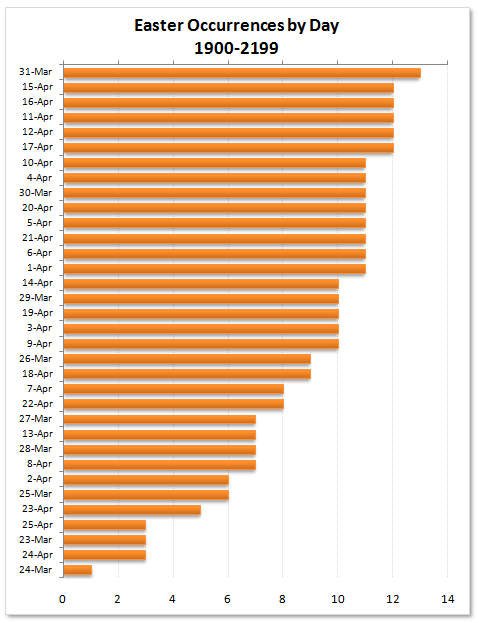
My first comment about the chart is that the combination of a gradient in the bar’s fill formatting, plus the shadows under the bars, makes me think either that there are multiple series in the chart, or that my eyeglasses need to be changed.
This issue is addressed simply by keeping the chart formatting as simple as possible. With all due respect to John, Excel 2007 makes it just too tempting to spoil a good chart.
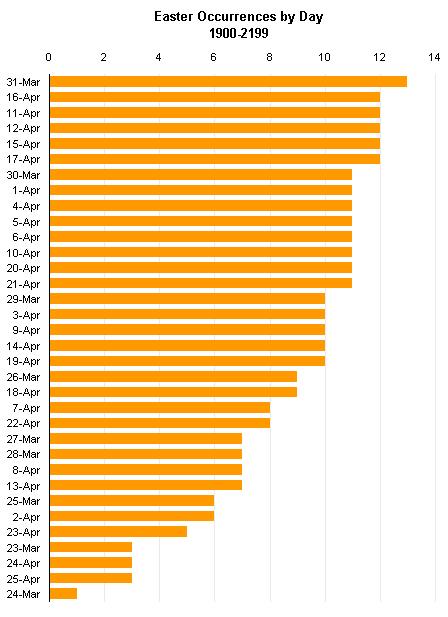
My second comment about the chart was that it might be more interesting to show the occurrences in date order rather than in occurrence order (a la Pareto), to try to understand why a given date may seem to be underrepresented.
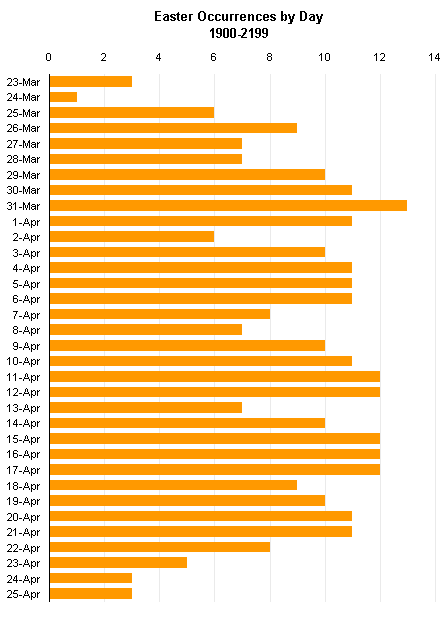
As expected, the dates in the middle of the date range are somewhat evenly distributed, while those at the edges (March 23 and 24, April 23-25) have lower representation.
I noted that John’s formula and one offered by Chip Pearson differed by one week in the prediction for 2079. Neither John nor Chip admit ownership of these respective calculations, so the error comes from the originators of one or the other relationship. I tried showing it in a bar chart, but that was even worse than the gradient and shadow in John’s chart that led me to write this post. Two series are evident, but it’s impossible to make sense of the chart.
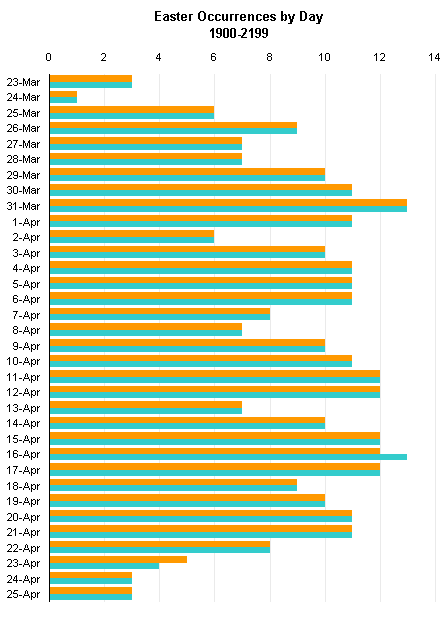
I converted this to a line chart with three series. One series shows all of John’s points, one shows all of Chip’s points, and one shows all the points where they agree. This last series is less distinctively formatted, and it appears in front of the other two series, so the chart highlights the points that differ while showing the general agreement.
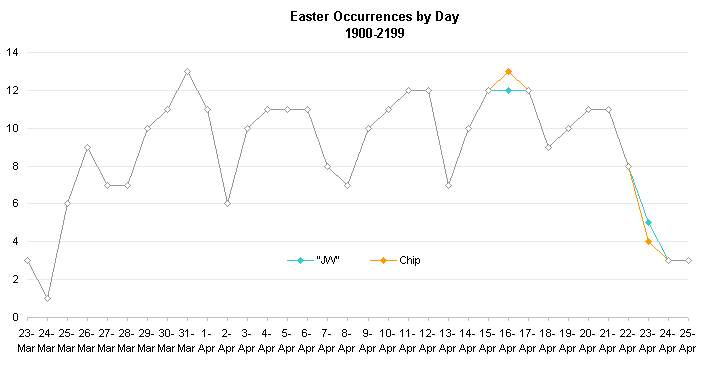
I’ve described the rationale behind my decision to sort the date axis categories by date in Choice of Category Axis Order. A future post will discuss various calculations of Easter.
John Walkenbach is the author of such popular, useful, well-written Excel books as Excel 2010 Bible, Excel 2010 Power Programming with VBA, Excel 2007 Charts, Excel 2010 Formulas, and Excel 2007 VBA for Dummies. Versions are probably still available for older editions of Excel, but for the most part, the content is applicable across the range of Excel editions.







